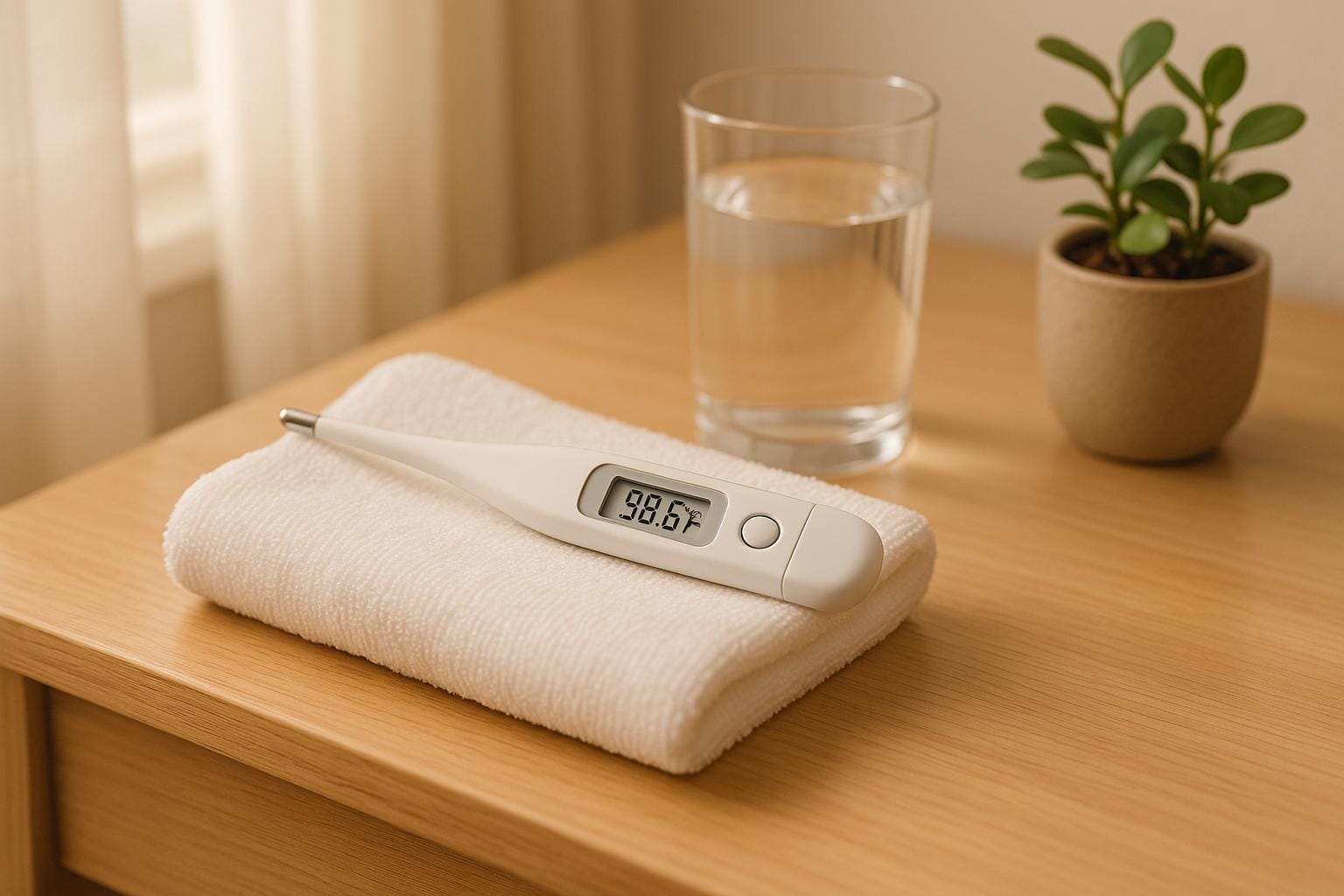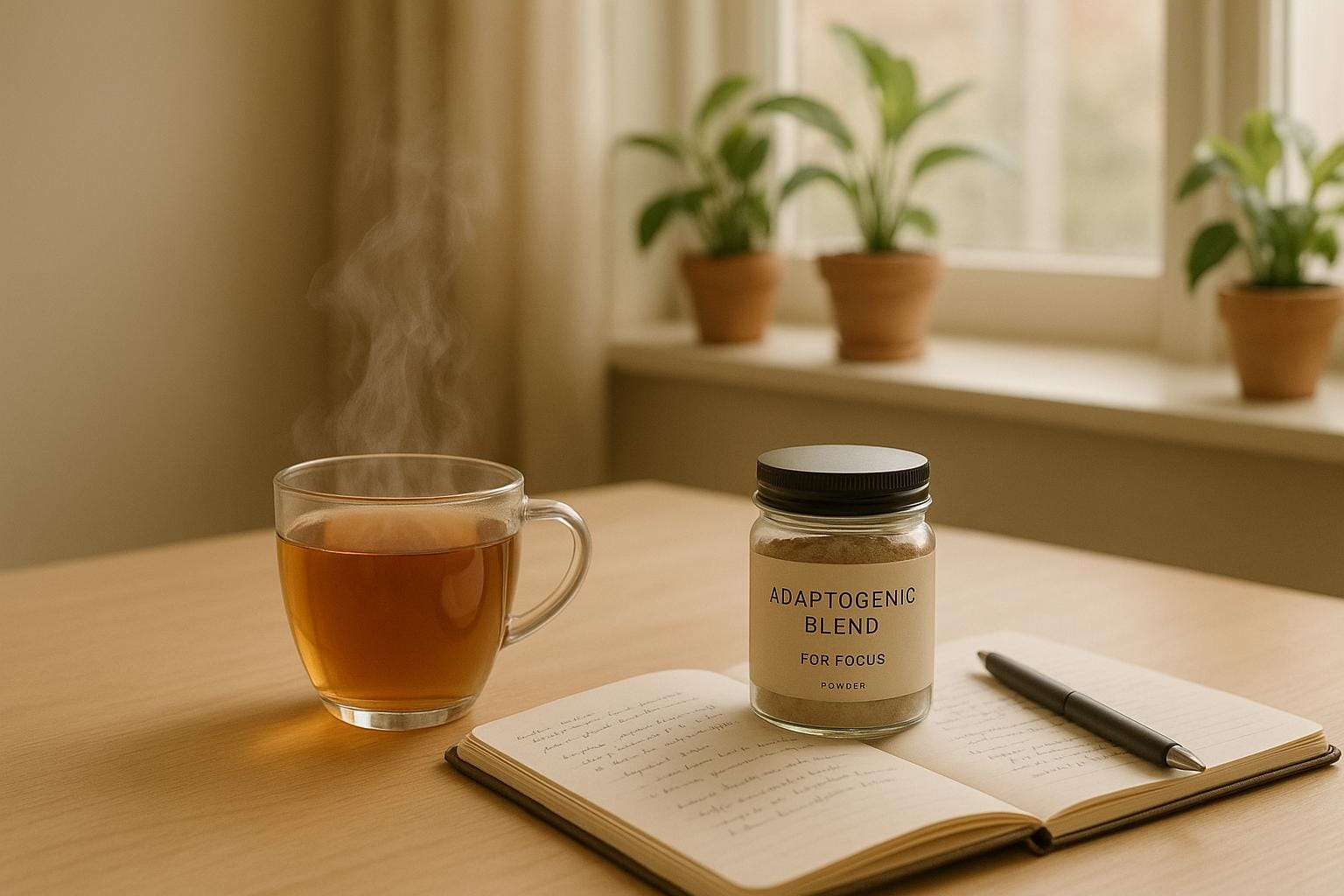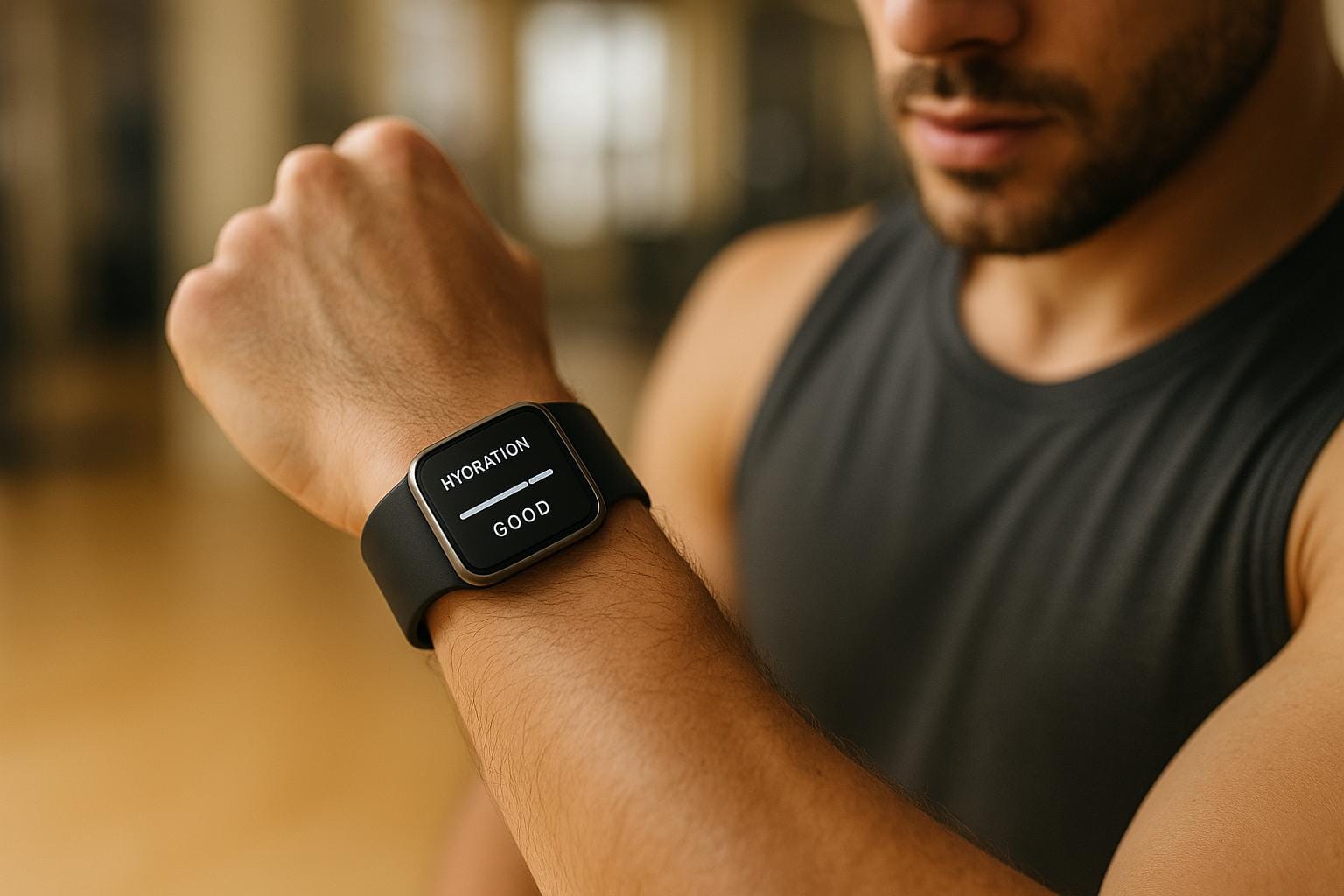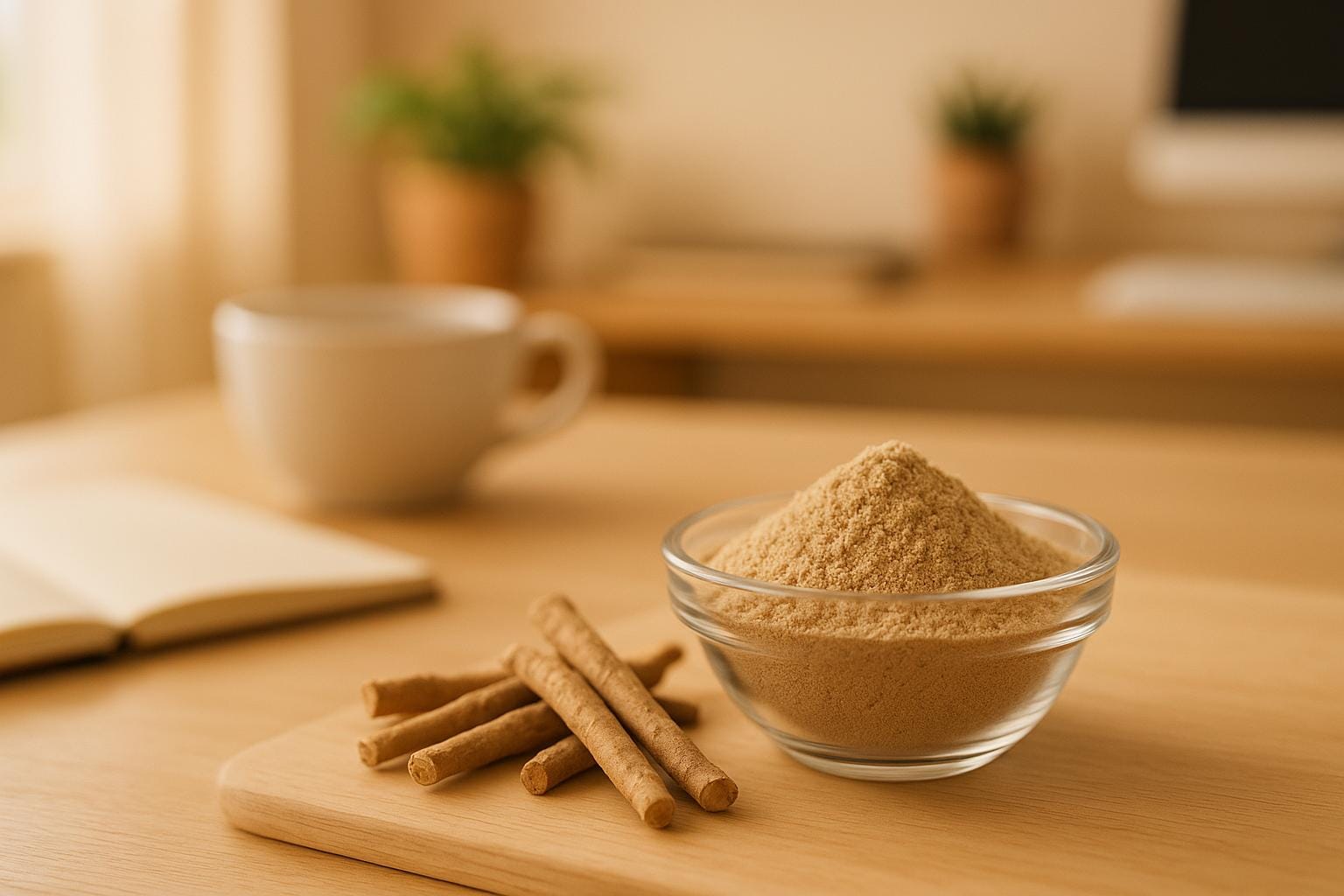Your body temperature reveals critical recovery insights. Post-workout, it reflects how well your body is healing, managing inflammation, and preparing for the next session. Here’s what you need to know:
- Why It Matters: Core temperature rises during exercise (up to 102°F) and how quickly it returns to normal (97°F–99°F) shows recovery progress. Lingering heat may signal incomplete recovery or stress.
- Who Benefits: Endurance athletes, fitness enthusiasts, and women tracking hormonal changes can use temperature data to optimize performance and recovery. Casual exercisers may not find it as useful.
- How to Track: Options range from $15 thermometers to $300+ wearable sensors like the Oura Ring or CORE Monitor for continuous tracking. Advanced tools offer precision for athletes and professionals.
- Key Recovery Signs: Elevated temperature and heart rate may indicate overtraining or illness. Consistent tracking reveals patterns and helps plan rest or training.
Quick Tip: Measure your temperature twice daily (morning and evening) and look for trends, not just single readings. Pair this with metrics like heart rate variability (HRV) and sleep data for a full recovery picture.
Let’s explore how to use temperature tracking tools and insights to boost recovery and performance.
The benefits of tracking skin temperature
How Body Temperature Relates to Recovery
Understanding the role of body temperature in recovery can offer valuable insights into how your body repairs itself. By recognizing your normal temperature range and how it responds to stress, you can better track your recovery progress.
Normal Body Temperature and Daily Variations
Contrary to the common belief that 98.6°F is a fixed standard, normal body temperature generally ranges between 97.7°F and 99.5°F (36.5°C to 37.5°C). For healthy individuals, daily fluctuations of up to 0.9°F (0.5°C) are typical, with some experiencing variations between 0.45°F and 0.9°F (0.25°C to 0.5°C).
Temperature naturally follows a circadian rhythm, dipping to its lowest point just before waking and peaking in the evening. This daily shift can amount to about 1.8°F (1°C) . As we age, both the average temperature and its variability tend to decrease.
Exercise also has a notable impact on core temperature. During physical activity, your core temperature rises quickly at first, then stabilizes as heat production and loss balance out. The intensity of your workout plays a bigger role in temperature changes than external factors. For instance, during intense exercise, muscle temperatures can exceed core values by 3.6°F to 5.4°F (2°C to 3°C).
What Temperature Says About Recovery
Post-exercise temperature patterns can reveal a lot about how well your body is recovering. After moderate workouts (about 70% of your maximum effort), your core temperature may stay elevated by around 0.7°F (0.4°C) above baseline. With more intense training (about 93% of your maximum effort), this increase can reach 1.4°F (0.8°C) and take longer to return to normal.
Typically, core temperature normalizes within 30 minutes after moderate exercise and up to 40 minutes after more intense sessions . If your temperature remains elevated beyond this timeframe, it may indicate ongoing recovery processes, which could affect your performance in future workouts.
Different types of training lead to distinct temperature patterns. For example:
- Endurance training: Skin temperature rises immediately post-exercise and even more noticeably about 8 hours later.
- Strength training: Temperature increases are more uniform, peaking significantly 8 hours after exercise.
- Speed training: Skin temperature may initially drop, followed by an increase several hours later.
Heart rate is another useful indicator. During illness or stress, your heart rate can increase by approximately 10 beats per minute for every 0.9°F (0.5°C) rise in temperature. If both your resting heart rate and temperature are elevated, it might suggest incomplete recovery.
"When an athlete is trying to improve their performance, they have to push their limits, but sometimes a line is crossed. Repetitive, strenuous training without adequate recovery can lead to overtraining, causing a negative impact on how the athlete feels and performs."
– Marci A. Goolsby, MD, Medical Director of the Women's Sports Medicine Center at HSS
Overtraining can disrupt your body's ability to regulate temperature and may bring on symptoms like reduced appetite, mood swings, and stalled performance. In such cases, the natural rhythm of body temperature is often thrown off due to insufficient recovery.
Tracking nighttime temperature can also highlight ongoing inflammation or incomplete recovery from training stress. These trends provide a foundation for the monitoring strategies explored in the next section.
This article is for informational purposes only and is not intended as medical advice. Please consult a healthcare professional before starting any new fitness or wellness routine.
Tools for Measuring Body Temperature
Picking the right tool for tracking body temperature can be the difference between occasional data points and meaningful recovery insights. From basic thermometers under $20 to high-tech wearable sensors priced over $300, there’s a range of options catering to different needs. Below, we’ll break down three main categories: standard thermometers, wearable monitors, and advanced sensors. Each brings its own mix of cost, convenience, and precision.
Standard Thermometers
If you’re just starting out, standard thermometers are a reliable choice for basic temperature tracking. These tools are known for their accuracy but require manual use at specific times. Among them, rectal thermometers are the most precise, measuring roughly 0.5°F to 0.7°F higher than oral thermometers. However, they’re invasive, making oral thermometers a more practical choice for many. Oral thermometers balance convenience with accuracy, though food or drink can affect readings. Axillary (underarm) thermometers are less invasive but tend to record about 1.0°F lower than oral readings, which could lead to missed subtle changes in recovery status.
For an affordable option, the Natural Cycles BBT Thermometer offers Celsius and Fahrenheit readings, syncing easily with smartphone apps for just $15. While basic, these thermometers are great for creating a baseline to compare with data from more advanced devices.
Wearable Temperature Monitors
For those who want continuous tracking, wearable monitors are a game-changer. These devices not only eliminate the hassle of manual readings but also integrate other health metrics like sleep and activity.
The CORE Body Temperature Monitor, designed with athletes in mind, is priced at $274.49. Meanwhile, the Oura Ring, starting at $299, offers a sleek titanium design and tracks temperature alongside sleep, activity, and recovery metrics. AmyAnn Cadwell, Founder of The Good Trade, shared her experience:
"The most surprising benefit I've found in using my Oura Ring is the excellent menstrual cycle data. I was not expecting this information to be so reliable and impactful, and this metric alone would keep me wearing the ring 24/7."
For a more specialized option, Tempdrop ($199) uses a smart learning algorithm to adapt to your unique temperature patterns. Its FDA-cleared armband simplifies the process of tracking. User Elizabeth B. praised it:
"Tempdrop is life changing! no more remembering to take my temperature in the morning before i get out of bed, it does it all for you."
For budget-friendly alternatives, OvuFirst ($39) tracks skin temperature via a wrist sensor, while Mira ($35) combines temperature tracking with hormone monitoring, achieving 99% lab-grade accuracy.
Advanced Temperature Sensors
When precision is key, advanced temperature sensors deliver the kind of clinical-grade accuracy needed to monitor subtle recovery trends. These devices use sophisticated technologies, such as zero-heat-flux, to measure core temperature by tracking heat flow between the body and the environment.
The CORE sensor, for instance, has been rigorously tested against rectal thermometers and ingestible temperature pills, achieving a mean absolute deviation of just 0.21°C. Its zero-heat-flux technology ensures continuous core temperature readings, with studies showing near-perfect correlations to oral and rectal measurements (r = 0.994 and 0.993, respectively).
For professional-level monitoring, the DataTherm II Continuous Temperature Monitor ranges from $391.92 to $584.33, providing hospital-grade accuracy. For group settings, the CORE Team Bundle, which includes six devices and a charging station, is available for €1,779.95. These tools are particularly useful for detecting critical core temperature thresholds, such as 101.3°F (38.5°C) for optimal heat training or 103.1°F (39.5°C), where risks like gastrointestinal distress may arise.
Elite athletes, including Ironman World Champions, Tour de France winners, and Olympic gold medalists, have embraced these advanced sensors to fine-tune their training and recovery routines. Their ability to detect changes that surface-level devices might miss makes them invaluable for high-performance monitoring.
This article is for informational purposes only and is not intended as medical advice. Please consult a healthcare professional before starting any new fitness or wellness routine.
How to Read Temperature Data for Better Recovery
Interpreting temperature data is about more than just reading numbers off a screen. The real power lies in identifying trends and pairing these insights with other recovery metrics to make smarter decisions about when to train and when to rest.
Setting Your Baseline and Identifying Patterns
To get started, establish your personal temperature baseline over a two-week period. Research shows that healthy individuals can have daily temperature differences of up to 0.9°F, making it essential to focus on your own patterns rather than comparing yourself to averages.
During this two-week tracking phase, remember that body temperature naturally fluctuates throughout the day. It typically hits its lowest point around 4:00 AM and peaks around 6:00 PM, with daily variations ranging from 0.45°F to 0.9°F. Wearable devices like the Oura Ring can simplify this process by automatically calculating your baseline during the first couple of weeks and adjusting it as needed. These devices measure your average nighttime temperature and highlight changes relative to your baseline rather than presenting absolute values.
Here are some key patterns to keep an eye on:
- Normal Recovery Patterns: Healthy recovery often follows predictable rhythms. For instance, skin temperature rises in the evening to help cool your core for sleep and drops in the morning to promote wakefulness. Consistent patterns are a good sign.
- Signs of Poor Recovery: Deviations from your baseline could signal recovery issues. For example, elevated skin temperature may appear before you feel sick, as it often rises ahead of core body temperature during the onset of a fever. Persistent changes might also point to overtraining or insufficient recovery.
- Exercise-Related Changes: High-intensity workouts can cause skin temperature to rise due to increased muscle activity and heat dissipation, while lower-intensity exercise might lead to a temporary drop. Recognizing these trends helps you differentiate between normal post-exercise responses and potential recovery challenges.
- Menstrual Cycle Insights: For women, tracking temperature can reveal hormonal patterns. Progesterone increases core temperature by about 0.5°F to 1.3°F at ovulation, and nighttime skin temperature rises during the luteal phase before dropping prior to menstruation. Understanding these cycles can prevent misinterpreting hormonal changes as recovery problems.
By combining these patterns with other recovery metrics, you can gain a clearer picture of your overall well-being.
Combining Temperature Data with Other Recovery Metrics
Temperature data becomes even more valuable when paired with other indicators like heart rate variability (HRV) and sleep quality. As Casey Meserve from WHOOP explains:
"Skin temperature can tell you about how strain and sleep are affecting your recovery".
Here’s how to integrate these metrics effectively:
- Heart Rate Variability (HRV): A rising temperature baseline paired with a drop in HRV often points to stress or fatigue. On the other hand, a stable temperature and improving HRV suggest positive recovery trends.
- Sleep Quality: Temperature fluctuations directly affect sleep patterns. Wearable devices that track both temperature and sleep can reveal how changes impact deep sleep and overall rest. Poor temperature regulation often leads to disrupted sleep and slower recovery.
- Resting Heart Rate: An elevated temperature combined with a higher resting heart rate indicates your body is under stress, possibly fighting off illness or dealing with overtraining.
-
Advanced Tracking: New wearable technologies are now combining electrodermal activity (EDA) with core temperature monitoring to provide deeper insights. According to Thryve:
"The growing market of wearables has introduced sophisticated devices that allow for continuous electrodermal activity and core body temperature monitoring. These innovations enable healthcare providers, wellness platforms, and researchers to collect accurate, real-time biometric data at scale".
Daily Application: Start your day by reviewing your temperature data alongside other metrics like sleep quality, HRV, and resting heart rate. If two or more metrics show declines, consider reducing your training intensity and focusing on recovery. A single elevated temperature reading might just reflect environmental factors, but consistent declines across multiple metrics could mean your body needs extra care.
Even a small change in muscle temperature - just 1.8°F - can reduce performance by up to 5%.
This article is for informational purposes only and does not serve as medical advice. Always consult a healthcare professional before making changes to your fitness or wellness routine.
Setting Up a Temperature Monitoring Routine
Keeping track of your temperature regularly is key to understanding your recovery progress. Even the most advanced devices won’t be helpful unless you stick to a consistent routine and take measurements at the right times.
Best Times and Methods for Measuring
Your body temperature naturally rises and falls throughout the day. It’s at its lowest around 4:00 AM and peaks between 4:00 PM and 6:00 PM. To get the most accurate readings, measure your basal body temperature (BBT) first thing in the morning - before you get out of bed, eat, drink, or do anything else. If you wake up during the night, take your temperature after the longest stretch of sleep, making sure you’ve slept for at least three hours.
For reliable results, it’s a good idea to measure your temperature twice daily - once in the morning and once in the evening - for at least five days. Avoid taking readings right after eating, drinking, showering, or exercising, as these activities can throw off the numbers.
If you want to take it a step further, devices like the CORE Body Temperature Monitor provide continuous tracking with impressive accuracy (±0.38°F). Carles Tur, a coach for WorldPro Cycling, explains the benefits:
"CORE enables us to measure core and skin temperature to understand the body's thermal response in varying environments, allowing tailored heat protocols."
Once you’ve nailed down a schedule for measuring, the next step is to record and analyze your data effectively.
Recording and Analyzing Your Data
Keeping a detailed and consistent temperature log is essential for spotting trends and making informed decisions. Each entry should include the time, the context (e.g., resting or post-exercise), and any symptoms or activities that could affect your readings.
Thankfully, modern apps make this process much easier. For example, MedM's Health Diary app, recognized in July 2024 as one of the top health tracking tools, automatically syncs with over 800 smart health devices, including more than 70 connected infrared and digital thermometers. These apps are handy because they can:
- Send reminders for scheduled measurements
- Allow easy sharing of data with healthcare providers
- Alert you when your temperature goes above certain thresholds
Some apps are even designed to work seamlessly with thermometers specialized for basal body temperature tracking.
When analyzing your data, focus on long-term patterns rather than individual readings. Digital tools make it much easier to track and safeguard your temperature history compared to paper logs. Spotting trends in your data can help you make smarter recovery decisions and tweak your training plan as needed.
For accurate results, stick to high-quality thermometers that meet regulatory standards and pair them with reliable health tracking apps. If you’re using a tympanic thermometer (ear thermometer), always measure in the same ear to reduce variability. To get the best reading, gently pull back your ear to straighten the ear canal before inserting the probe. Studies show that tympanic thermometers are the most reliable option for regular temperature tracking, while infrared thermal imaging cameras tend to be the least accurate. Oral thermometers, on the other hand, often underestimate core body temperature, making ear-based measurements a better choice for recovery monitoring.
The key to meaningful temperature monitoring lies in consistency and sticking to your routine.
This article is for informational purposes only and is not intended as medical advice. Please consult a healthcare professional before starting any new fitness or wellness routine.
Outside Factors That Affect Recovery Temperature
Your body’s ability to regulate temperature during recovery is influenced by external conditions and lifestyle choices. Understanding these factors is key to interpreting your temperature data and optimizing your recovery.
Weather and Altitude Effects
Weather can significantly impact how your body regulates temperature post-exercise. In cold conditions, muscles tighten and lose heat quickly, increasing the risk of strains and sprains. Licensed Athletic Trainer Julie Carpenter highlights this challenge:
"Your body will fatigue faster in the cold weather without adequate fuel. The cold slows down all of your body's chemical processes, including your nervous system's ability to generate a muscle contraction."
To combat this, warm baths or saunas can help loosen tight muscles and improve blood flow after workouts. Keeping muscles warm is crucial for effective recovery and injury prevention.
On the other hand, exercising in hot conditions introduces thermal stress. Excessive sweating and dehydration can hinder recovery, as your body diverts resources to cool itself rather than repair muscles. Even a 2% drop in body weight due to sweating can harm performance.
Altitude adds another layer of complexity. As elevation increases, temperatures drop by 2°C (3.6°F) for every 300 meters (984 feet). At around 10,000 feet, oxygen availability decreases significantly, with inspired oxygen levels dropping to 69% of that at sea level. This can lower arterial oxygen saturation to 88%–91%, making it harder for your body to regulate temperature efficiently during recovery.
The Wilderness Medical Society suggests gradual acclimatization to manage altitude exposure. Avoid ascending to a sleeping altitude above 9,000 feet in a single day, and once you’re above 9,800 feet, limit sleeping altitude gains to no more than 1,650 feet per night. For every 3,300 feet gained, allow an extra night to acclimatize.
To adapt effectively at high altitudes, ascend gradually, stay hydrated, and pace your activities. Watch for symptoms of altitude sickness, such as headaches, nausea, dizziness, or shortness of breath. While your body can adjust to moderate oxygen levels at altitudes up to 17,000 feet, this process takes time and proper hydration to support temperature regulation.
Hydration's Role in Temperature Control
Hydration is another critical factor in maintaining temperature balance. When dehydrated, your core temperature rises, and your body’s ability to cool itself through sweating diminishes. This can create a domino effect that slows your recovery.
During physical activity, you can lose up to 2 quarts of fluid per hour, with endurance activities draining as much as 3 quarts per hour. Thirst is a late sign of dehydration, signaling a fluid deficit of about 2% of your body weight. Dietitian Rayven Nairn of Johns Hopkins University explains:
"Feeling thirsty signals an already critical fluid deficit."
To stay ahead of dehydration, calculate your sweat rate by weighing yourself before and after exercise. This helps you determine how much fluid you need to replace. For post-exercise recovery, aim to consume 150% of the fluid lost during exercise. For every pound lost, drink 16–24 ounces of water or a hypotonic sports drink.
Check your urine color to gauge hydration - pale, straw-yellow urine indicates proper hydration, while darker shades suggest dehydration. Don’t wait until you’re thirsty to drink, and consider replacing electrolytes, especially sodium, to maintain fluid balance and stimulate thirst.
For workouts lasting over an hour, sports drinks can be more effective than water because they replenish electrolytes and provide energy. For shorter, moderate-intensity sessions, water is usually sufficient. Adding small amounts of carbohydrates can also help your body absorb fluids more efficiently, speeding up recovery.
By understanding the effects of weather, altitude, and hydration on your body’s temperature regulation, you can make smarter decisions about your recovery routine and better interpret your temperature data.
This article is for informational purposes only and is not intended as medical advice. Please consult a healthcare professional before starting any new fitness or wellness routine.
Making the Most of Body Temperature Monitoring
Tracking body temperature isn't just about numbers - it’s about turning those numbers into actionable strategies to enhance training, speed up recovery, and avoid setbacks. By aligning your recovery plans with your unique temperature patterns, you can fine-tune your approach. For instance, research suggests that your optimal core body temperature during training is around 101.3°F (38.5°C). Even minor deviations from your personal range can impact performance, and core temperatures exceeding 103.1°F (39.5°C) may lead to issues like gastrointestinal distress.
"Accurate and reliable data collection of core body temperature and body temperature fluctuations is a powerful tool for optimizing athletic performance. It enables the personalization of training and recovery protocols and provides objective data on the effectiveness of countermeasure strategies." – BodyCAP
Real-time monitoring brings a new level of precision to your workouts and recovery. Devices like the Core Sensor (priced at $290), reviewed by iRunFar in 2024, use advanced thermal energy transfer technology to measure your core body temperature - not just surface skin temperature. This allows you to make quick adjustments to intensity, hydration, or cooling strategies during your workout. Such real-time insights help you seamlessly integrate recovery strategies into your routine.
For example, after intense strength training, cold water immersion can help reduce tissue damage. On the other hand, after endurance sessions, saunas or hot water immersion can improve blood flow and aid in clearing metabolic waste.
Technology is also simplifying how we integrate temperature monitoring into daily routines. In April 2024, Polar teamed up with Sennheiser to launch the MOMENTUM Sport earbuds. When paired with compatible Polar watches, these earbuds display real-time core temperature and heart rate data. This setup helps you recognize when to dial down your intensity to prevent overheating.
Consistently tracking these variations over time provides a broader perspective, helping you adapt your recovery strategies to match your training demands. These insights can also shed light on your nutritional needs and overall recovery status.
The ultimate goal is to develop a systematic approach that aligns recovery strategies with the specific physical stress your body is experiencing. By combining temperature data with other recovery metrics, you can gain a comprehensive understanding of your body's needs and respond with targeted interventions that get you back to peak performance faster.
This article is for informational purposes only and is not intended as medical advice. Please consult a healthcare professional before starting any new fitness or wellness routine.
FAQs
How can tracking body temperature improve workout recovery and performance?
Monitoring your body temperature can play a key role in boosting recovery and performance after exercise. Shifts in your temperature reveal how your body reacts to physical activity and can help you address issues like overheating or dehydration.
For instance, if your core temperature climbs above 103°F, it could lead to fatigue, diminished performance, or even heat-related illnesses. By tracking these changes, you can tweak your training intensity, stay properly hydrated, and use cooling methods post-workout to aid recovery. This kind of mindful approach not only safeguards your health but also helps you get the most out of your fitness efforts.
What are the best tools for monitoring body temperature during recovery, and how do they compare in accuracy and ease of use?
Monitoring your body temperature can be a great way to keep tabs on recovery and overall wellness after exercise. Popular tools for this include wearable devices like fitness trackers and smartwatches, as well as dedicated temperature sensors. Each option comes with its own level of accuracy and convenience, depending on how it’s designed and what it’s meant to do.
Wearable devices, such as smartwatches, often offer continuous temperature tracking along with other features like heart rate monitoring and sleep analysis. This makes them a flexible choice for those who want an all-in-one solution. On the other hand, dedicated temperature sensors - like ear or forehead thermometers - are known for their precision but are typically better suited for one-time checks rather than ongoing monitoring.
When deciding which tool works best for you, think about what matters most: ease of use, detailed data, or integration with other fitness metrics. Keeping a consistent eye on your temperature trends can give you valuable insights into your recovery process and help you fine-tune your wellness routine.
How do weather and altitude affect body temperature and recovery after exercise?
Weather and altitude significantly impact how your body manages temperature and recovers after exercise. In hot weather, your body struggles to cool itself, causing your core temperature to rise and increasing the risk of dehydration. This can slow down recovery since your body prioritizes heat management over muscle repair. Meanwhile, cold weather demands extra energy to keep you warm, which can drain glycogen stores. To recover well in such conditions, paying close attention to nutrition becomes essential.
High altitudes bring their own set of challenges. With less oxygen available, your exercise performance may drop, and recovery can take longer. While your body eventually adapts by producing more red blood cells, this adjustment isn’t immediate, often leaving you feeling more fatigued at first. To recover effectively in high-altitude environments, it’s important to scale back your training intensity, stay hydrated, and focus on a diet that supports your body’s needs in these demanding conditions.












